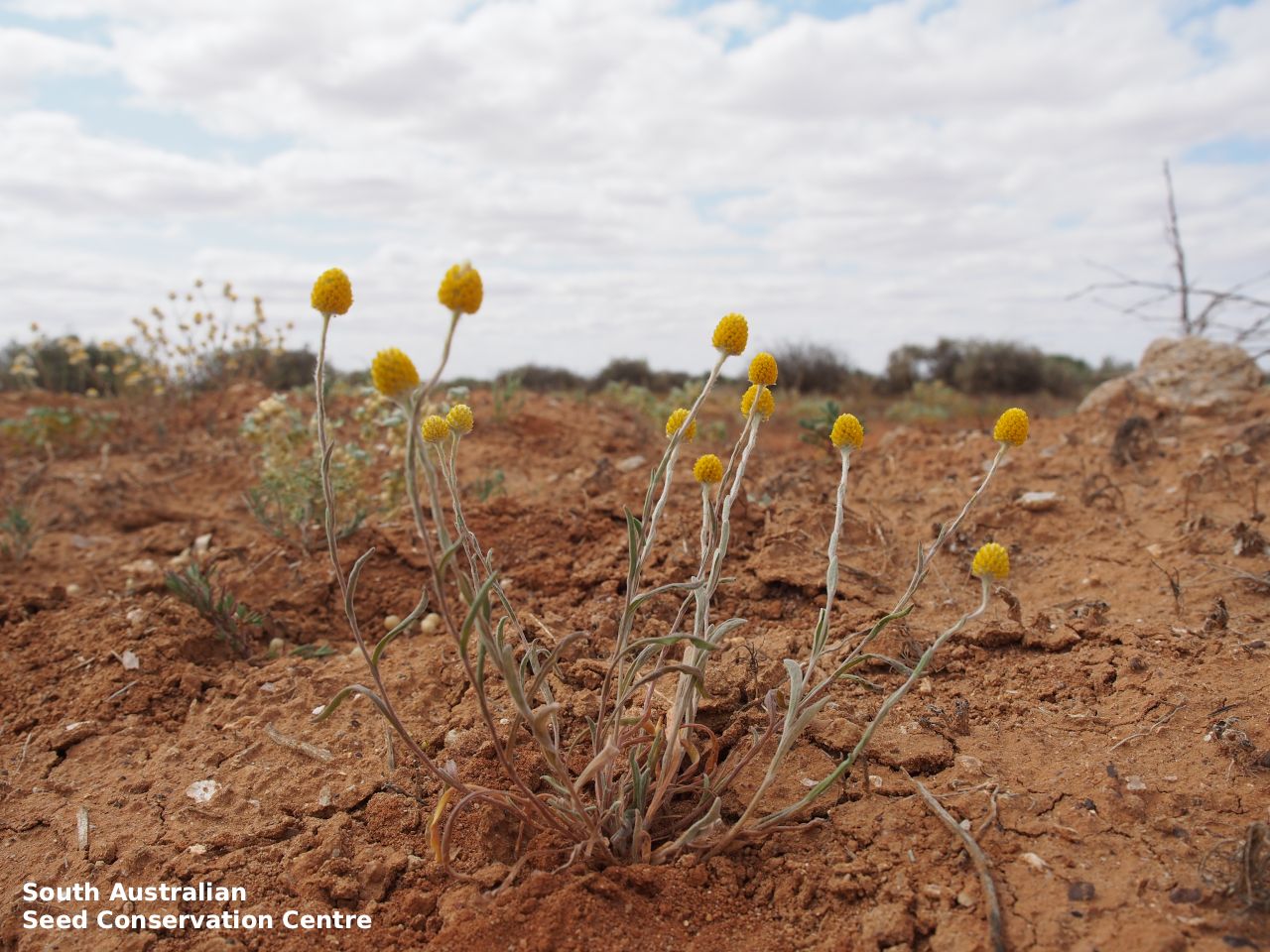
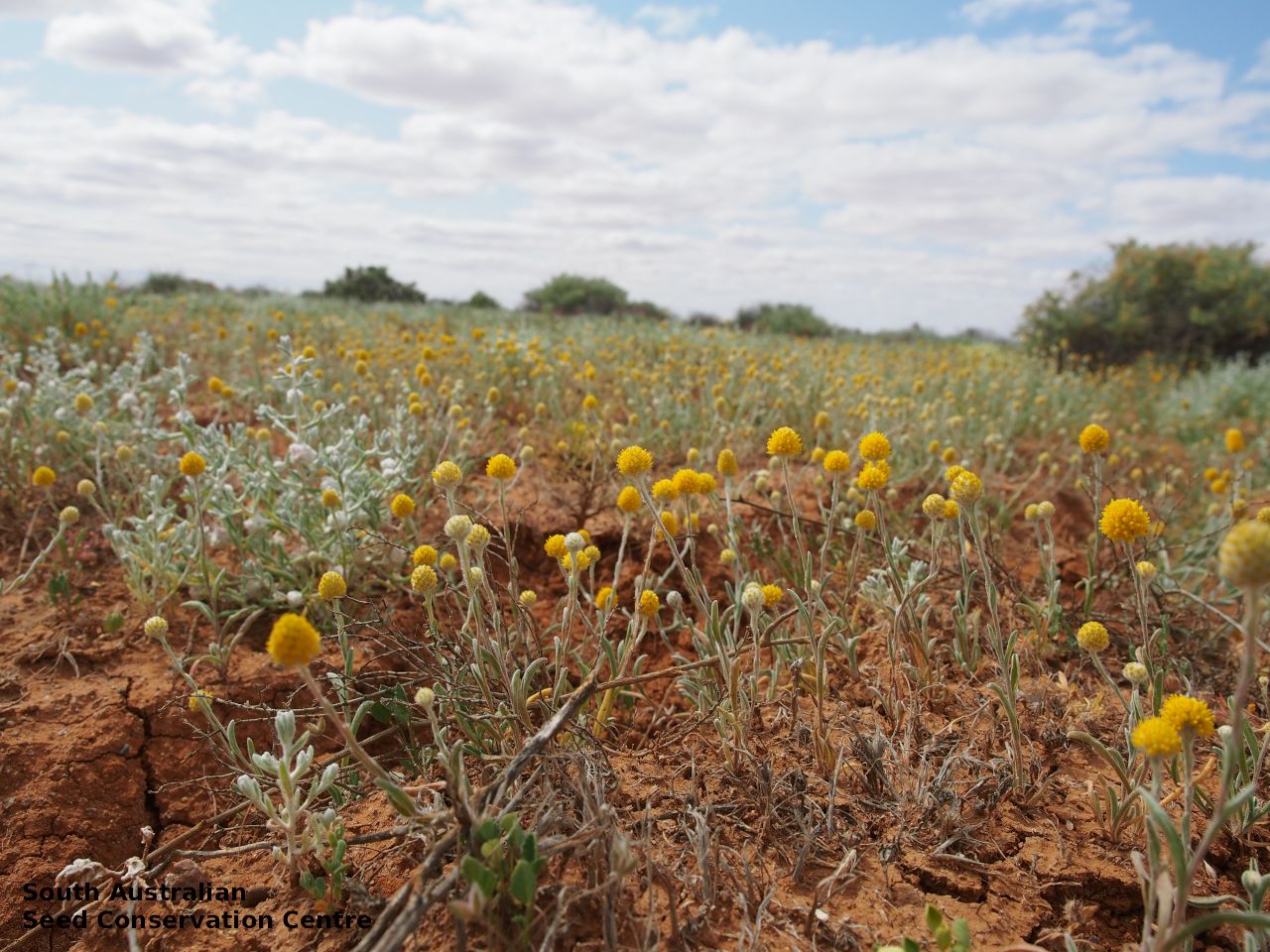
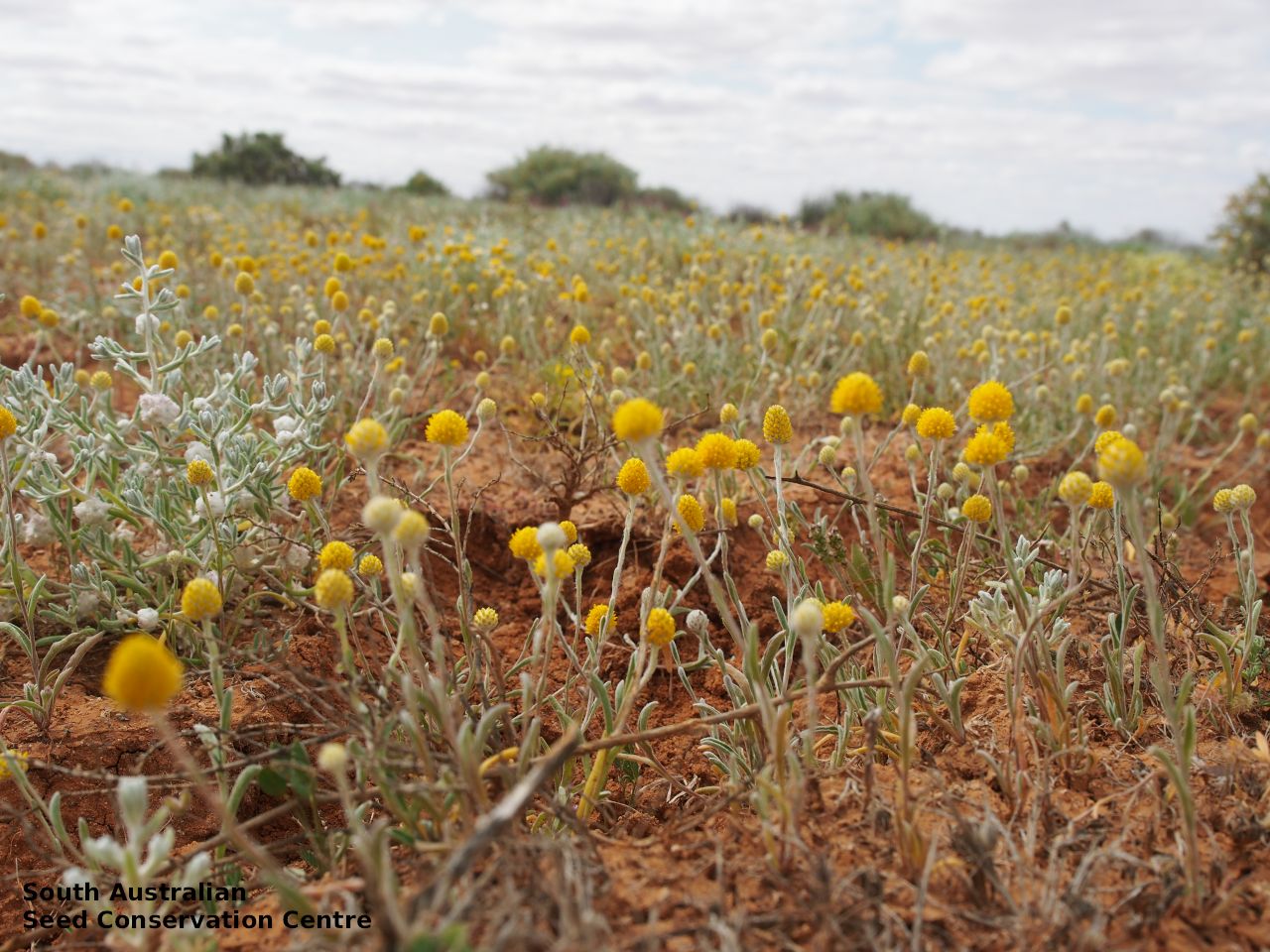
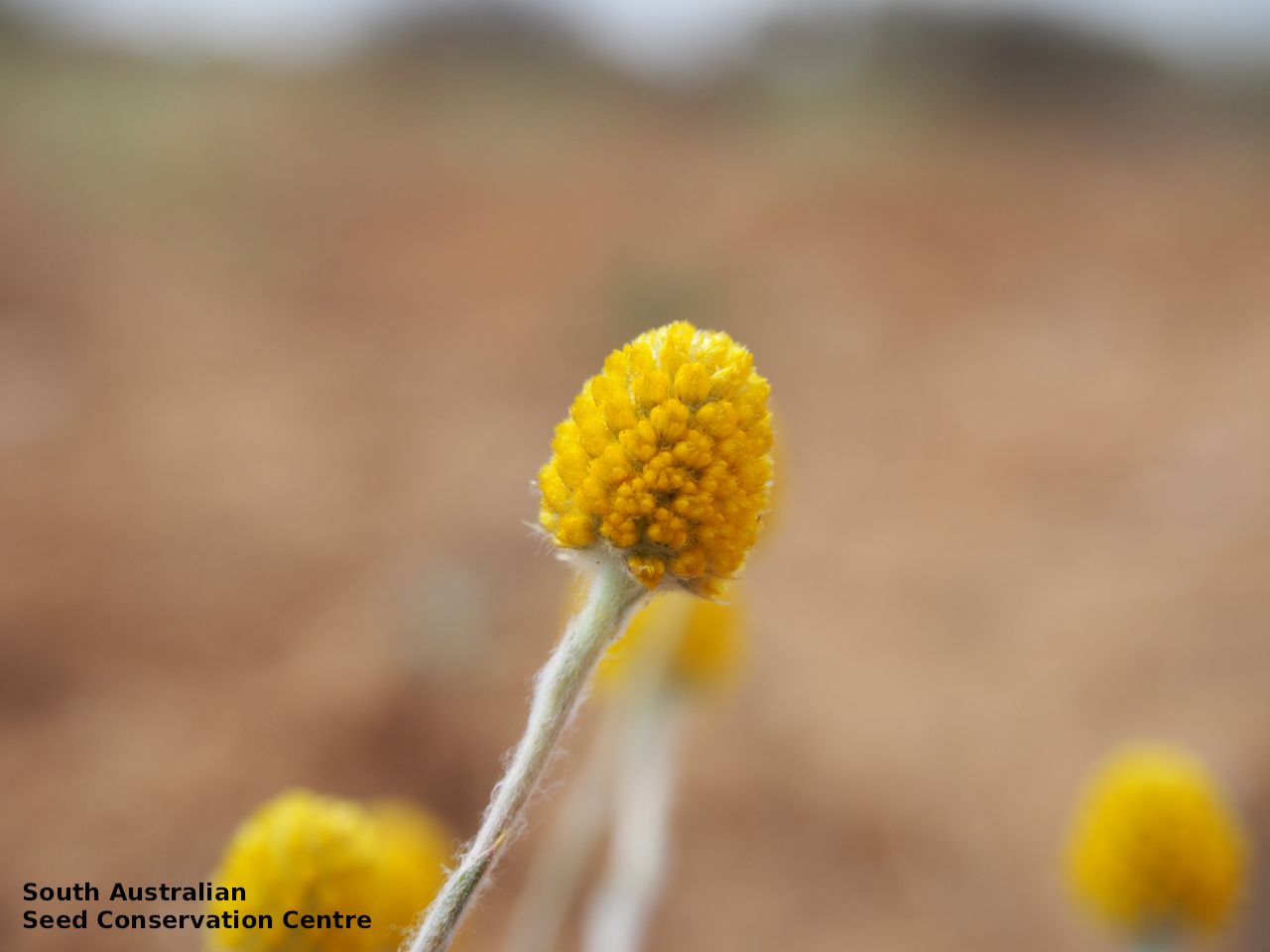
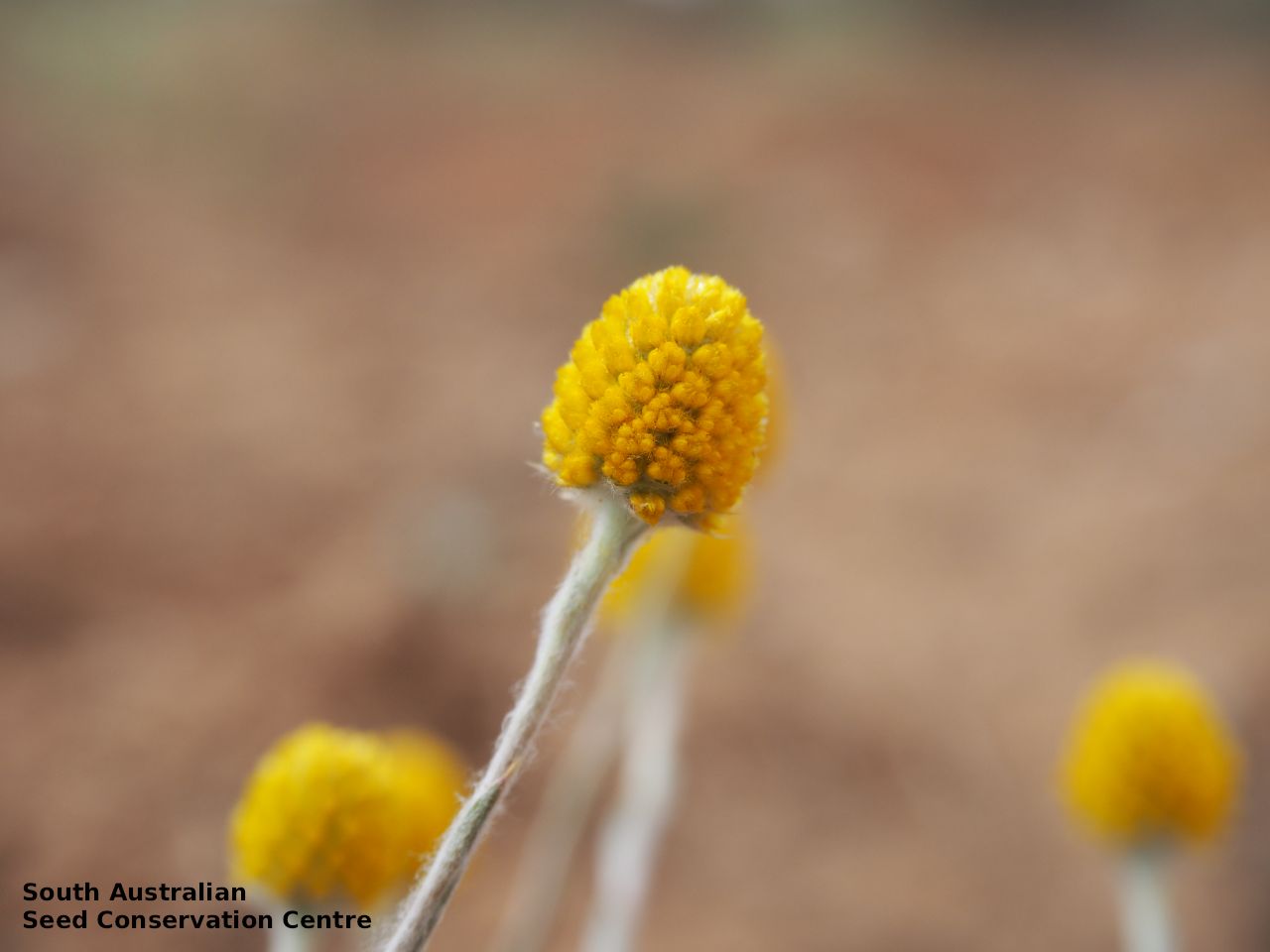
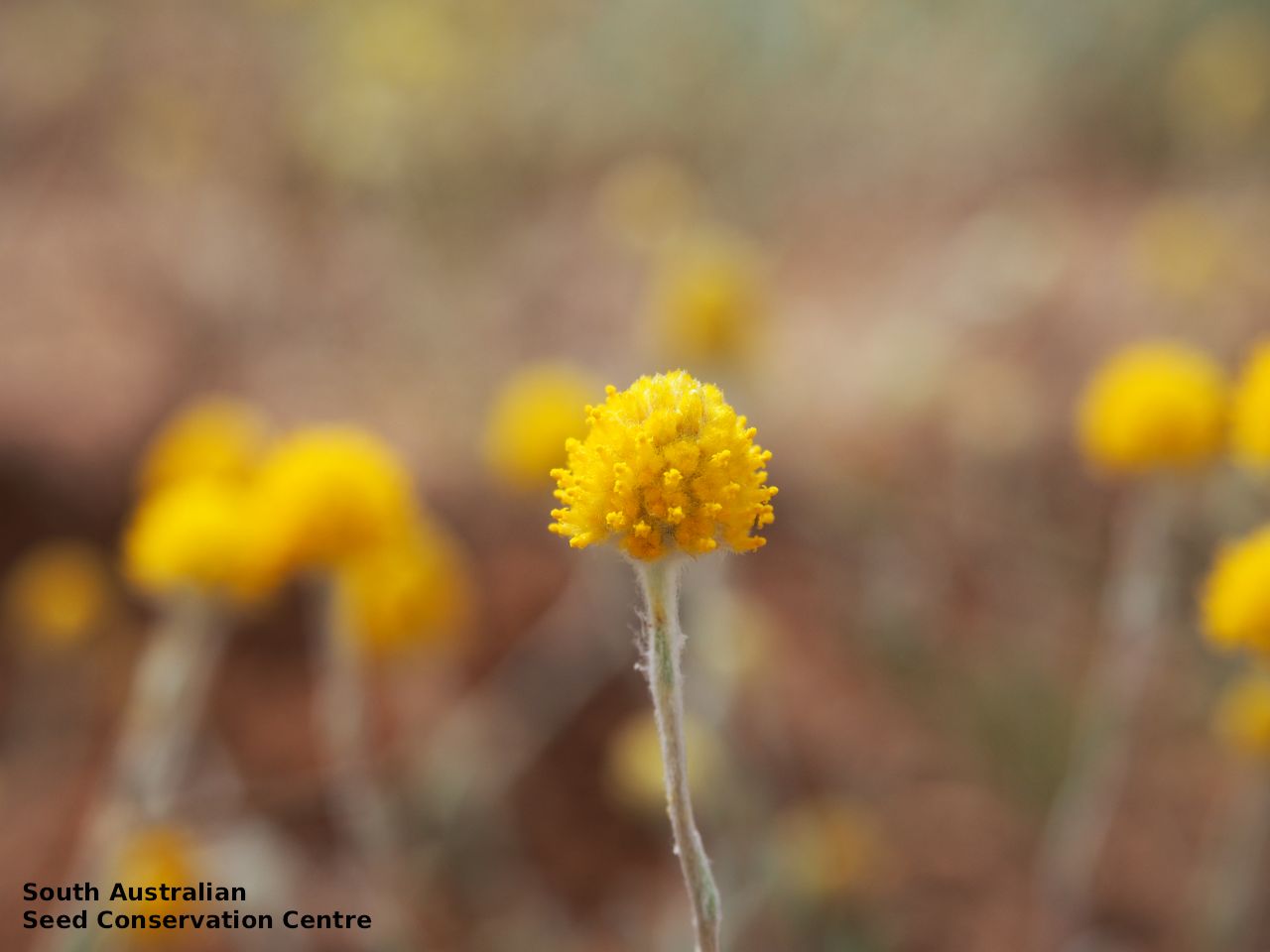
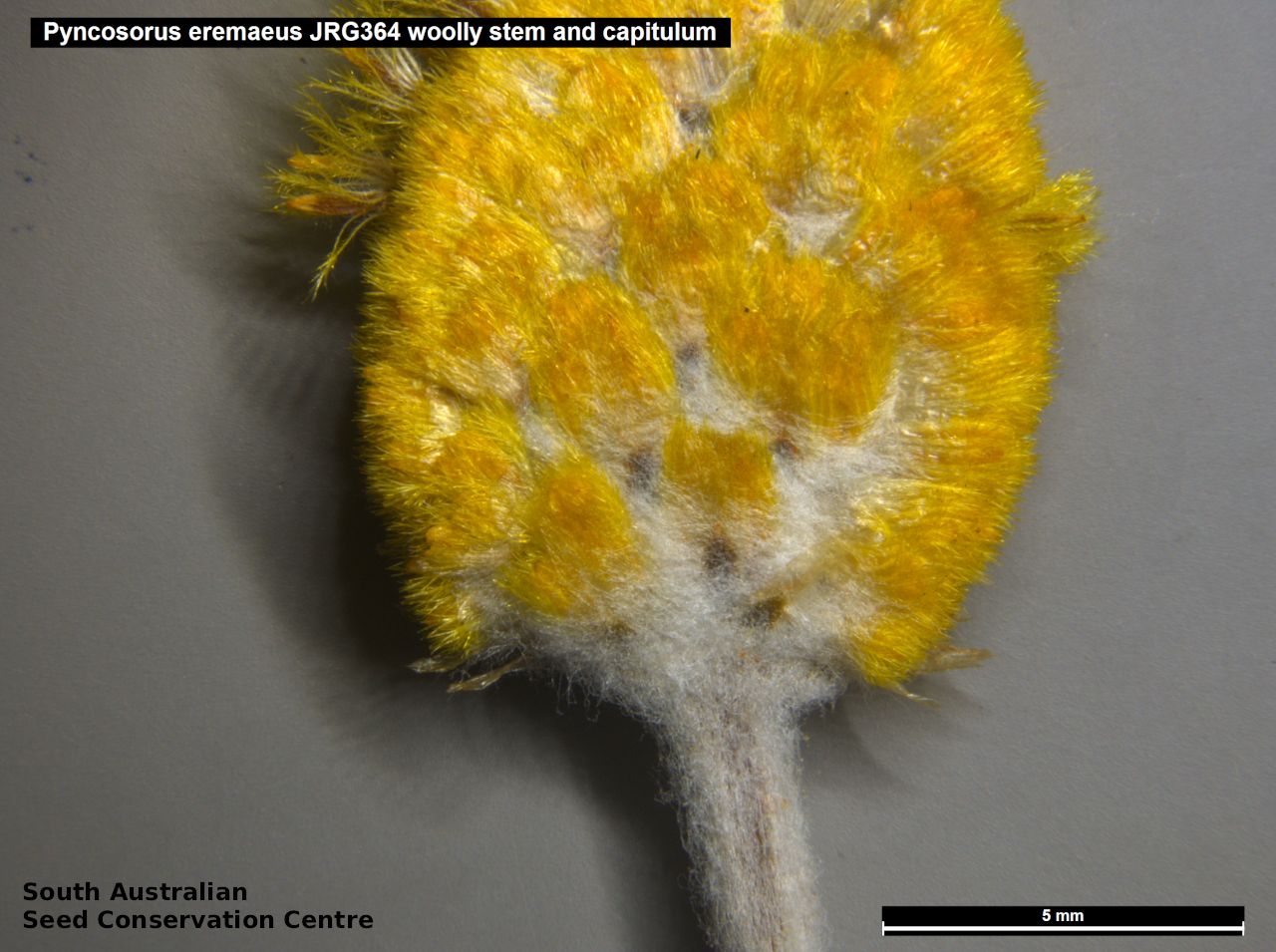


Botanical art
Prior names
Craspedia chrysantha, partly
Common names
Yellow Drumsticks
Golden Billy-buttons
Etymology
Pycnosorus from the Greek 'pyknos' meaning dense or thick and 'soros' meaning heap, referring to the dense flowering heads of the genus. Eremaeus from the Greek 'eremos' meaning solitary, referring to its remote inland distribution.
Distribution and status
Found in the north and north-eastern parts of South Australia, growing on heavy or rocky soils. Also found in the Northern Territory and Queensland. Native. Common in South Australia. Common in the other states.
Herbarium regions: Lake Eyre, Flinders Ranges
NRM region: South Australian Arid Lands
AVH map: SA distribution map (external link)
Plant description
Ascending or erect herb with stems arising from a woody tap-root, to 35 cm high. Leaves linear-ovate to narrow-spathulate, to 60 mm long and 6 mm wide, decreasing in length up the stem, hairy on both surface with a distinct white margin. Inflorescence a single ovoid or globose compound golden-yellow head to 25 mm long and 13 mm wide, mostly less than tice as long as wide. Flowering between June and December, but probably dependent on time of rainfall. Fruits are dense pale ovoid to globular heads with numerous seeds. Seed embryo type is spatulate fully developed.
Seed collection and propagation
Collect seeds between July and January. Collect heads that are drying off, fluffy and turning yellow-white with hard brown seeds. Pick off whole heads or pluck off mature seeds with your fingers. Place the heads in a tray and leave to dry for one to two weeks. Then rub the heads gently by hand to dislodge the seeds. Use a sieve to separate the unwanted material. Store the seeds with a desiccant such as dried silica beads or dry rice, in an air tight container in a cool and dry place. Seeds are non-dormant, viable seed should germinate readily.